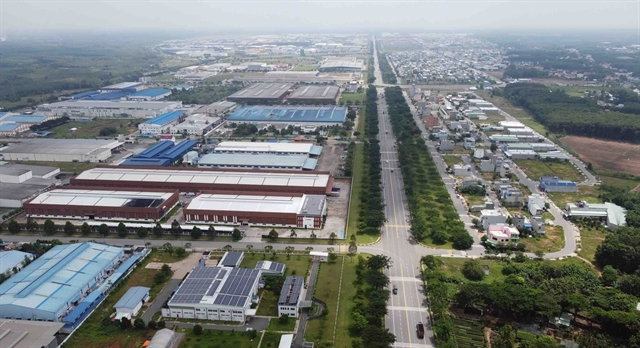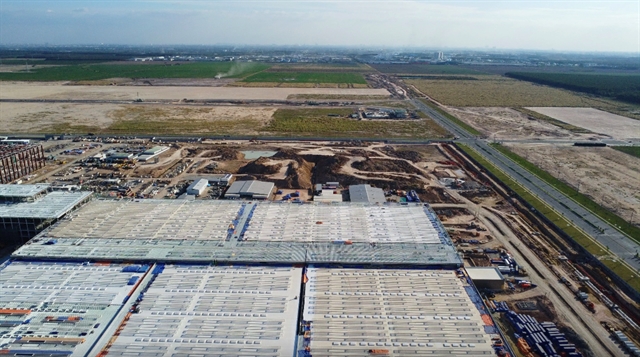 Economy
Economy

 |
| Việt Nam – Singapore Industrial Park III (VSIP III) is the first new generation in Bình Dương Province. — Photo nld.com.vn |
HÀ NỘI — In 2024, Bình Dương Province plans to attract 130-140 investment projects to industrial parks (IP), securing US$1.2-1.3 billion from foreign capital and VNĐ1.1-1.2 trillion from domestic investors.
The plan includes a total construction investment capital of VNĐ5.7 trillion ($230.6 million), with the provision of leasing or subleasing 100-150 hectares of land. The objective is to attract 15,000 workers and achieve a total revenue of $35-40 billion.
The management board of Bình Dương Province's industrial parks reported that there are currently 28 operational IPs in this area, with an impressive occupancy rate of over 93 per cent.
This makes Bình Dương the locality with the highest IP occupancy rate in the entire country.
To date, Bình Dương's IPs have attracted 3,080 active projects. Among them, are 2,400 foreign-invested projects with a registered capital of nearly $29 billion and 680 domestic projects with a registered capital of nearly VNĐ93.6 trillion.
From 2023 to 2025, the province has developed 10 IPs, covering a total land area of about 3,154 hectares.
For 2026-30, the plan expands to 19 IPs, with a total land area of around 5,537 hectares. This includes the completion of the ongoing development of the IPs from the 2023-25 period, covering an area of about 2,063 hectares, and the addition of nine new IPs, spanning 3,474 hectares.
These IPs will follow the "3-in-1" model, combining IPs, urban areas, and service areas. They will feature comprehensive and modern technical and social infrastructure.
The investment attraction for these IPs will be more focused and selective, emphasising specialisation, ecological considerations and smart developments. — VNS